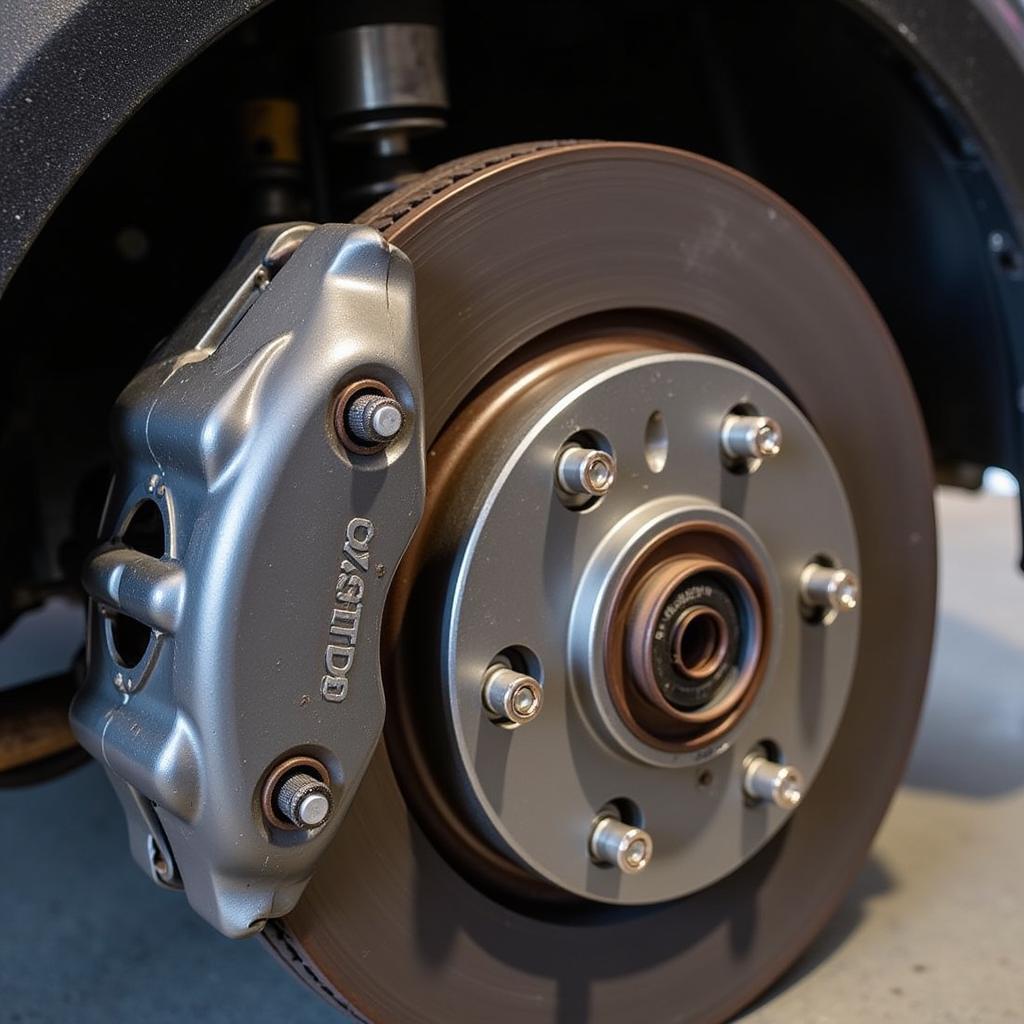The brake fluid warning light on your F-150 dashboard is a critical safety indicator that should never be ignored. This light illuminates when your truck’s onboard computer detects an issue within the braking system, often related to low brake fluid levels. Ignoring this warning could lead to significantly reduced braking performance, increasing the risk of an accident. This comprehensive guide will delve into the common causes of the F-150 brake fluid warning light, guide you through potential solutions, and equip you with the knowledge to address this issue safely and effectively.
Why is My F-150 Brake Fluid Light On?
While a drop in brake fluid level is the most frequent culprit behind the illuminated warning light, several other factors can contribute to this issue:
- Worn Brake Pads: As your F-150’s brake pads wear down, the brake calipers need to extend further to engage the rotors. This extension requires more brake fluid, leading to a lower level in the reservoir and triggering the warning light.
- Brake Fluid Leak: A leak anywhere within the braking system, be it the master cylinder, brake lines, or wheel cylinders, can cause a significant drop in brake fluid and activate the warning light.
- Faulty Brake Fluid Level Sensor: The sensor in the brake fluid reservoir, responsible for detecting low fluid levels, can malfunction. A faulty sensor may send inaccurate signals to the dashboard, triggering the warning light even when brake fluid levels are adequate.
- Issues with the ABS System: While less common, problems with your F-150’s Anti-lock Braking System (ABS), such as a failing ABS module or sensor, can also trigger the brake fluid warning light.
How to Troubleshoot the F-150 Brake Fluid Warning Light
Before taking any action, it’s crucial to prioritize safety. If you’re experiencing braking issues or notice a significant drop in brake fluid level, avoid driving and consult a qualified mechanic immediately.
Here’s a step-by-step guide to help you troubleshoot the brake fluid warning light:
-
Check the Brake Fluid Level: With the engine off and parked on a level surface, locate the brake fluid reservoir under the hood (refer to your owner’s manual for the exact location). The reservoir will have a “Min” and “Max” marking. Carefully inspect the fluid level. If it’s below the “Min” mark, you’ll need to add brake fluid.
-
Inspect for Leaks: Carefully examine the area around the brake fluid reservoir, brake lines, and all four wheels for any signs of fluid leaks. Look for wet spots, drips, or a damp appearance on any of these components. A leak requires immediate attention from a qualified mechanic.
 F-150 Brake Fluid Leak
F-150 Brake Fluid Leak -
Check Brake Pad Wear: Inspect the thickness of your brake pads through the spaces between the wheel spokes. If the pads appear significantly thin or you’re approaching the manufacturer’s recommended replacement mileage, consider having them replaced.
-
Seek Professional Assistance: If the brake fluid level is consistently low despite refilling, you suspect a leak, or the warning light remains illuminated after addressing the above steps, it’s essential to seek professional assistance. A qualified mechanic can accurately diagnose the problem and perform the necessary repairs.
Remote Diagnostics and Software Solutions
In some instances, the brake fluid warning light may be triggered by software glitches or sensor errors within your F-150’s complex electronic systems. Remote diagnostics and software solutions, offered by specialized automotive service providers, can be highly effective in these situations:
- Remote Diagnostics: Skilled technicians can remotely access your F-150’s onboard computer system to retrieve diagnostic trouble codes (DTCs) related to the braking system. This allows them to pinpoint the root cause of the warning light, often eliminating unnecessary and time-consuming physical inspections.
- Software Updates and Reprogramming: Outdated software or minor glitches in your F-150’s braking system modules can sometimes trigger false warning lights. Remote software updates and reprogramming can effectively address these issues, restoring your braking system to its optimal performance.
Conclusion
Addressing the brake fluid warning light on your F-150 is crucial for ensuring your safety and the longevity of your truck’s braking system. By understanding the potential causes, following the troubleshooting steps outlined in this guide, and considering the advantages of remote diagnostics and software solutions, you can confidently address this issue and enjoy peace of mind on the road. Remember, when in doubt, always consult a qualified mechanic for a thorough inspection and professional repair.


